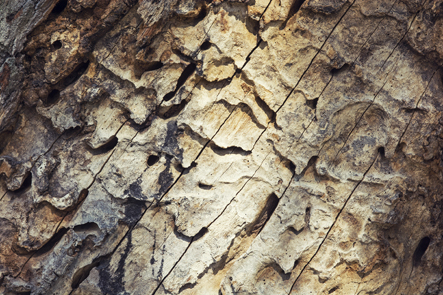Learn It
To read a scientific text successfully, it is important that you do the following:
- Always read more than once – first to get the main idea and then again to make sure you did not miss any important details.
- Take notes so you can identify important details and revisit them later.
- Look for parts of the text where the quantitative information is needed to support or further explain what is being conveyed by the qualitative information.
 Emerald ash borer beetles have destroyed tens of millions of trees in the United States. The larvae of these tiny beetles feed on the inner bark of trees, destroying the trees’ ability to transport water and nutrients, thus causing the trees to die.
Emerald ash borer beetles have destroyed tens of millions of trees in the United States. The larvae of these tiny beetles feed on the inner bark of trees, destroying the trees’ ability to transport water and nutrients, thus causing the trees to die.Read the following excerpt from the Newsela article "Little green bug devours big trees."opens in new window As you read, pay attention to the qualitative and quantitative details that are given, and then explore the slideshow below.
Things were already looking bad for trees. The emerald ash borer, a tiny, glitter-green insect from China, is expected to kill nearly all ash trees in the eastern United States, unless they are treated with expensive chemicals. Now, there is more disturbing news: The borer may have found a new target.
The U.S. Department of Agriculture confirmed that the borer had attacked the white fringe tree, which is in the same family as not only the ash, but forsythia and lilac.
Experts don’t know quite what to make of the find yet, other than that it is worrisome.
Tom Tiddens supervises plant health care at the Chicago Botanic Garden. The finding, he said, "is bringing up more questions than answers.”
The Botanic Garden has 42 “beautiful” fringe trees of its own to worry about.
- Newsela article, "Little green bug devours big trees"opens in new window
Examining Qualitative and Quantitative Information in a Text
After reading the first section of the article, there are still some unanswered questions. Return to the article, "Little green bug devours big trees,"opens in new window and view the diagram titled Tree Killer. Next, combine evidence from the excerpt you read and the image to answer the question in the activity below.







